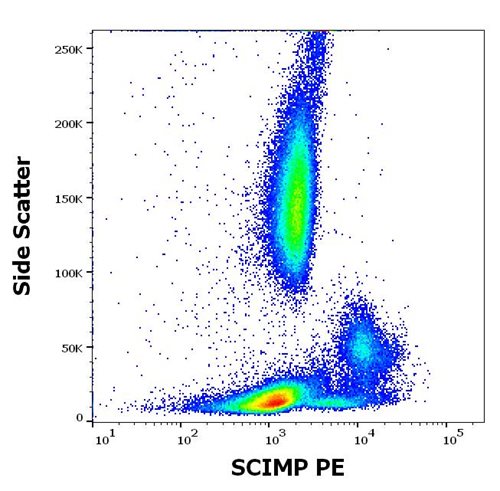Anti-HLA-B (MHC Class I) Monoclonal Antibody(Clone: EP-4)
Shipping Info:
For estimated delivery dates, please contact us at [email protected]
| Amount : | 100 µg |
| Isotype : | Mouse IgM, kappa |
| Content : | 200 µg/ml of Ab Purified from Bioreactor Concentrate. Prepared in 10mM PBS with 0.05% BSA & 0.05% azide. Also available WITHOUT BSA & azide at 1.0mg/ml. |
| Storage condition : | Antibody with azide - store at 2 to 8°C. Antibody without azide - store at -20 to -80°C. Antibody is stable for 24 months. Non-hazardous. |
This MAb recognizes the HLA-B27 cell surface antigen on human cells. It may be used to HLA type human lymphocytes. Approximately 60% of patients with ankylosing spondylitis are HLA-B27 positive. This reagent can be used to help identify this HLA haplotype in human lymphocytes. Major histocompatibility complex (MHC) molecules form an integral part of the immune response system. They are cell-surface receptors that bind pep- tides and present them to T lymphocytes. Human leukocyte antigens (HLAs) are polymorphic members of the MHC family that are specifically involved in the presentation of antigens to the T cell receptor. There are two classes of HLA antigens: class I (HLA-A, HLA-B and HLA-C) and class II (HLA-D). Class I molecules are expressed in nearly all cells and play a central role in the immune system by presenting peptides derived from the endoplasmic reticulum. The differential structural properties of MHC class I and class II molecules account for their respective roles in activating different populations of T lymphocytes. HLA-B encodes a membrane anchored heavy chain, which hetero-dimerizes with a light chain (-2-Microglobulin) to form MHC-I. Polymorphisms yield hundreds of HLA-B alleles. The HLA-B27 allele appears with increased frequency in uveitis patients.
Flow Cytometry (1-2ug/million cells); Immunofluorescence (1-2ug/ml);
For Research Use Only. Not for use in diagnostic/therapeutics procedures.
|
There are currently no product reviews
|















.png)











